Facts about Squirrel

Squirrels are integral to forest regeneration and food chains and help to keep insects under control.

The term "flying" is somewhat of a misnomer, since flying squirrels are actually gliders incapable of true flight.

Gnawing on the equipment, the squirrels may be electrocuted and cause a power surge that shorts equipment.
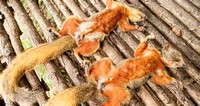
Earlier editions of American cookbooks often included recipes for cooked squirrel.

Squirrels have brought down the high-tech NASDAQ stock market twice and were responsible for a spate of power outages at the University of Alabama.

Tree squirrels, as the name suggests, are arboreal, spending most of their time in trees.

Squirrels caused 177 power outages in Lincoln, Nebraska, in 1980, which was 24 percent of all outages.

Squirrels are popular characters in cartoons and children's books, such as the works of Beatrix Potter.

In 1970, the value of red squirrel pelts trapped in Canada was about US$1 million (Nowak 1983).

Hand feeding is not recommended, however, because squirrels may carry bubonic plague or other animal-borne diseases.

Squirrel is the common name for rodents of the family Sciuridae.

Prairie dogs, like other ground squirrels, dig underground dens for protection from predators and from the weather.

Tree squirrels are omnivores; they eat a wide variety of plant food, including nuts, seeds, fruits, fungi, and green vegetation, and they also eat insects, eggs, small birds, small mammals, frogs, and carrion.

The word squirrel comes from the Greek words skia ("shadow") and oura ("tail"); in other words, "tail that casts a shadow."

The tree squirrel’s unique habit of burying food for their own survival harmoniously fosters the development of forest from the uneaten nuts and seeds.

Tree squirrels inhabit the forests of Eurasia, North America, and South America.

The most well-known to English speakers are the northern flying squirrel (Glaucomys sabrinus) and the southern flying squirrel (Glaucomys volans) of North America, and the Siberian flying squirrel (Pteromys volans) of northern Eurasia.

The squirrel family is divided into 5 sub-families, 51 genera, and 278 species.
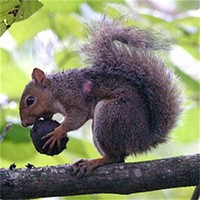
Tree squirrels are sometimes pests on farms as well, eating growing crops and stored food.

Tree squirrels are medium-sized for rodents, with adults weighing from 150 to 2000 grams (0.3 to 4.4 lbs).

One well-known trait of some species of tree squirrels is the gathering and storing of nuts and seeds for the winter.

Many people enjoy the company of tree squirrels and like watching their seemingly cheerful and energetic antics.
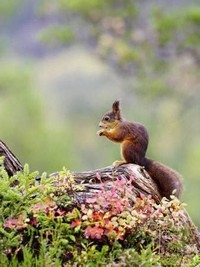
Squirrels also help the forest by helping to keep the population of potentially harmful insects under control.
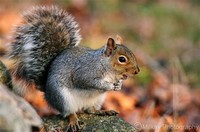
Squirrels living in parks and campuses in cities have learned that humans are typically a ready source of food.
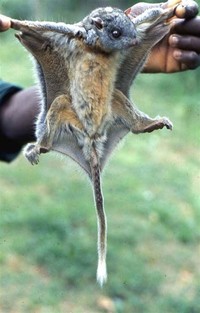
The scaly-tailed flying squirrels of Africa are not sciurids, but members of another rodent family, Anomaluridae.

The Sciuridae family (squirrel family), called sciurids, also includes flying squirrels, and ground squirrels such as the chipmunk, prairie dog, and marmot (including woodchucks).




